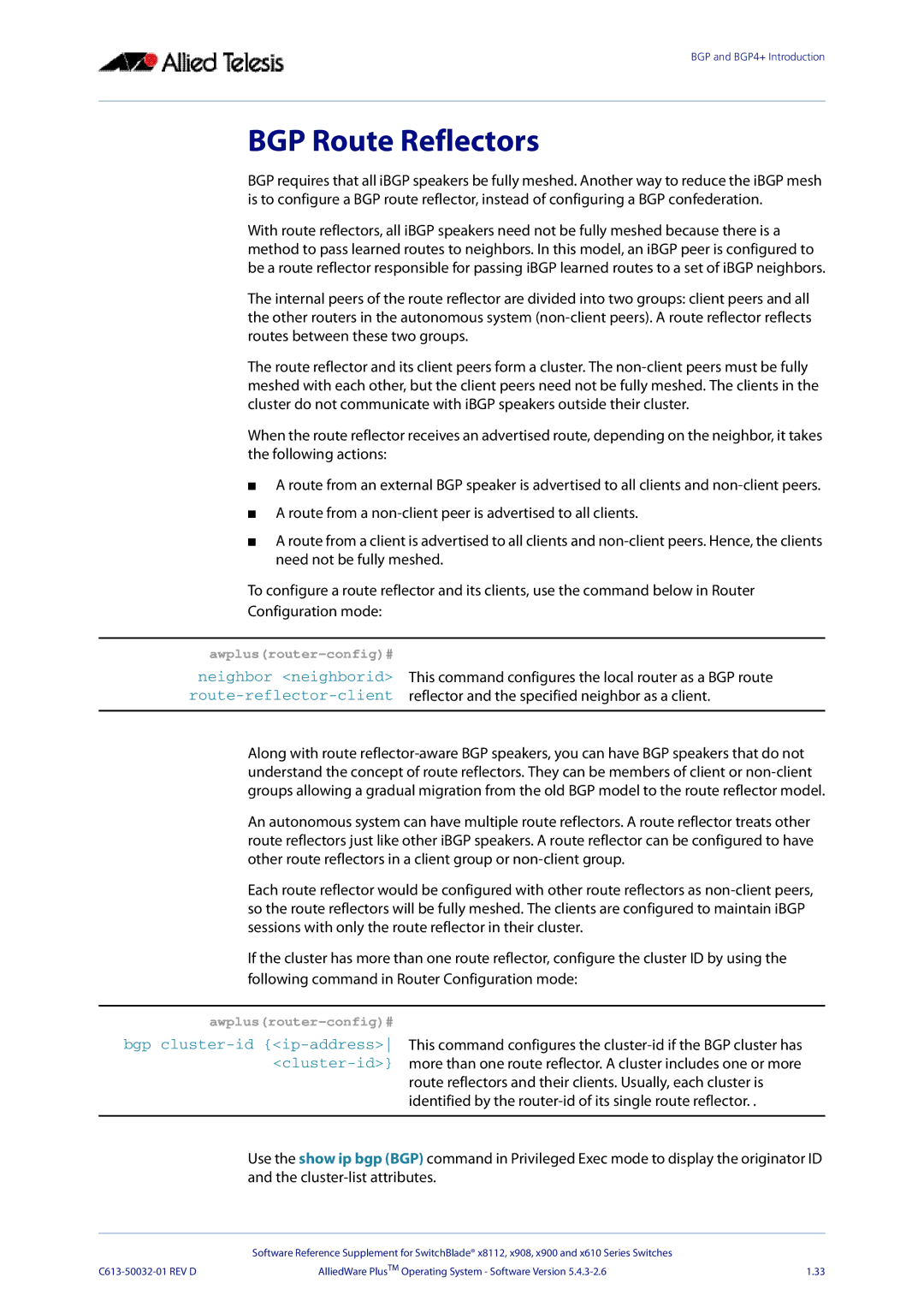
BGP and BGP4+ Introduction
BGP Route Reflectors
BGP requires that all iBGP speakers be fully meshed. Another way to reduce the iBGP mesh is to configure a BGP route reflector, instead of configuring a BGP confederation.
With route reflectors, all iBGP speakers need not be fully meshed because there is a method to pass learned routes to neighbors. In this model, an iBGP peer is configured to be a route reflector responsible for passing iBGP learned routes to a set of iBGP neighbors.
The internal peers of the route reflector are divided into two groups: client peers and all the other routers in the autonomous system
The route reflector and its client peers form a cluster. The
When the route reflector receives an advertised route, depending on the neighbor, it takes the following actions:
■A route from an external BGP speaker is advertised to all clients and
■A route from a
■A route from a client is advertised to all clients and
To configure a route reflector and its clients, use the command below in Router
Configuration mode:
neighbor <neighborid> This command configures the local router as a BGP route
Along with route
An autonomous system can have multiple route reflectors. A route reflector treats other route reflectors just like other iBGP speakers. A route reflector can be configured to have other route reflectors in a client group or
Each route reflector would be configured with other route reflectors as
If the cluster has more than one route reflector, configure the cluster ID by using the following command in Router Configuration mode:
bgp
route reflectors and their clients. Usually, each cluster is identified by the
Use the show ip bgp (BGP) command in Privileged Exec mode to display the originator ID and the
| Software Reference Supplement for SwitchBlade® x8112, x908, x900 and x610 Series Switches |
|
AlliedWare PlusTM Operating System - Software Version | 1.33 |
